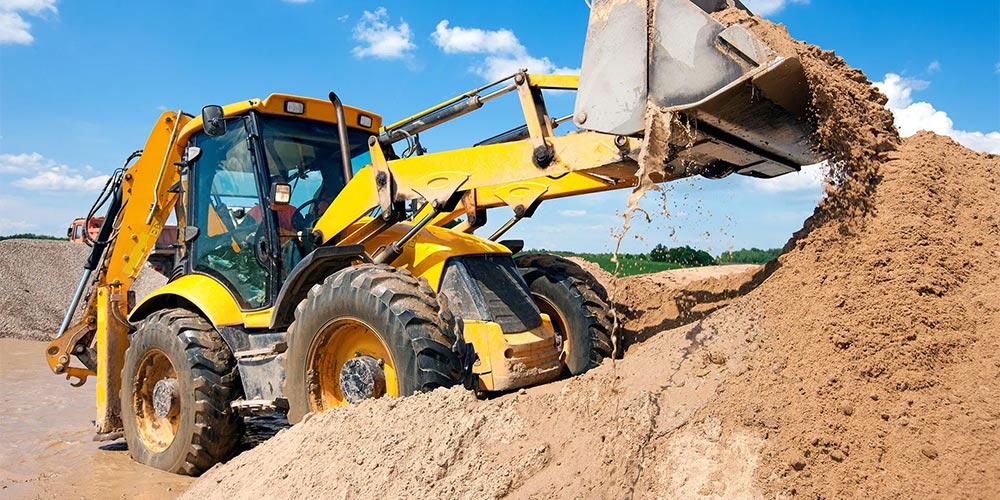
The global market for heavy construction equipment is projected to increase to $273.5 billion by 2030 from $176.2 billion in 2020. These predictions follow a CAGR of 4.4% from 2021 to 2030. This growth can be attributed to the increasing investments in the infrastructure sector, especially in developing economies. Heavy construction equipment is used for various purposes, such as earthmoving, material handling, demolition, and paving. These equipment are highly beneficial for the construction industry as they help complete construction projects in a shorter time frame and with fewer resources. That said, here are heavy equipment trends that are predicted to dominate the market in 2023:
Increasingly Autonomous Operation
The construction industry is rapidly evolving, and heavy equipment is increasingly being operated with little or no human intervention. In some cases, this is due to the increasing use of automation and robotics. For example, construction companies now use drones to map worksites and automated vehicles to transport materials. In other cases, it is simply a matter of operators becoming more comfortable letting machines take on more responsibility. For example, some excavators and skid steers are equipped with remote-controlled systems that allow human operators to control them from a distance. This trend will only continue in the coming years as construction companies seek to increase efficiency and safety.
Greater Connectivity and Data Sharing
Heavy equipment is increasingly relying on connectivity and data sharing to operate effectively. By sharing data between machines and devices, construction companies can optimize their workflows, improve safety, and reduce costs. Increased connectivity makes it easier for construction companies to track their equipment’s location and status. This information can be used to improve fleet management and make sure that everyone is working as efficiently as possible. Overall, the increased use of connectivity and data sharing is helping to drive heavy equipment more efficiently and productively.
Increasing Popularity of Rental Equipment
There is a growing trend of construction projects opting for renting heavy equipment over purchasing it outright. The most common reason for this is the flexibility that renting offers. Those that require the use of heavy equipment can lease what they need for a set period rather than commit to ownership, which can be costly in terms of the short-term purchase price and maintenance. Another advantage of renting is that it gives users access to the latest models and technology, providing renters with the most up-to-date equipment. This increased flexibility and convenience has made renting heavy equipment more popular.
Hence, if you’re considering entering the rental business, you can focus on growing and maintaining your heavy equipment fleet. Doing so will ensure that you stay ahead of the competition and meet the demands of your customers. Alongside this, you can also consider focusing your fleet on a specific brand. For instance, Volvo is one of the top choices for many construction projects. As such, having a Volvo-centric fleet of various equipment, such as bulldozers, excavators, and cranes, can help your rental business. In this case, if most of your clients require digging equipment, you can get a Volvo excavator for sale that can fulfill their rental needs. This will not only help you serve your clients better but also allow you to brand your business as a recognized rental provider.
Increased Use of Alternative Fuels
The use of alternative fuels for heavy equipment in construction is on the rise. Technological advances offer many options, including biodiesel, natural gas, and propane. This is good news for construction companies, as it gives them more options to choose from when it comes to powering their equipment. One of the significant benefits of using alternative fuels is that they can help reduce emissions. This is particularly important in the construction industry, where heavy equipment might be used on a site close to residential areas. By switching to cleaner-burning fuels, construction companies can help reduce air pollution.
The Rise of Electric Vehicles
In recent years, there has been a growing trend toward using electric vehicles in construction. Electric vehicles have many advantages over traditional gas-powered models. They produce zero emissions, which is better for the environment and helps to improve air quality in urban areas. Electric vehicles are also much quieter than gas-powered models, which can significantly benefit noise-sensitive areas. Additionally, electric vehicles tend to be more energy-efficient than their gas-powered counterparts, saving money on fuel costs over time. The rising popularity of electric vehicles is helping to make construction sites cleaner, quieter, and more efficient.
Heavy equipment is constantly evolving, and it’s essential to stay up to date on the latest trends. Doing so will help you keep your business competitive and meet your customers’ needs. It’s essential to pay attention to these trends so you can make changes where necessary. By doing so, you’ll be able to ensure that your business remains successful well into the future.
